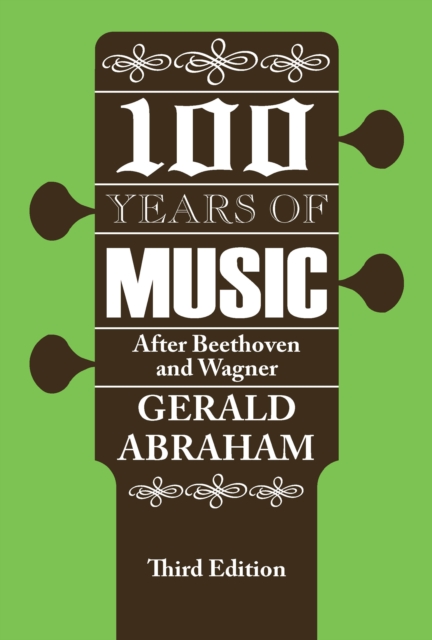
One Hundred Years of Music : After Beethoven and Wagner PDF
by Gerald Abraham
Description
One Hundred Years of Music provides a full account of the history of music from the death of Beethoven to the modern era.
It covers a period of exceptional interest. The last hundred years coincide roughly with the rise and decline of Romanticism, include the various nationalist movements, and extend to the advent of "neo-classicism," the twelve-tone system, and still more modern techniques.
Abraham devotes ample space to modernist and avant garde music, in which he explains the difficulties we experience in listening to the work of such composers as Schnberg, Bart k, and Berg.
He also throws new light on many more familiar topics.In its earlier editions, One Hundred Years of Music became a standard work on this subject; it has since been brought updated to include coverage of later developments.
Abraham approaches his subject as an historian of style rather than an esthetic critic.
Rather than pass judgment on particular works or composers, he shows how music has developed, and thus provides a clear and connected history that is more substantial than most books of musical appreciation.
An extensive chronology and a full bibliography and index add to the usefulness of the book for students, professionals and musical laymen alike.This third edition incorporates some corrections of fact, further enlarges the bibliography and chronology, and adds commentary on developments in music techniques.
In order to correct the historical perspective, the author has included a "prelude" and three "interludes," giving rough sketches of general conditions in the musical world at intervals of thirty years.
As the reader's sense of chronology is very apt to get confused when a number of simultaneous streams of development have to be described, the author has inserted the date of composition or performance (both if they are widely separated) of each work at the first mention of it.
Information
-
Download - Immediately Available
- Format:PDF
- Pages:320 pages
- Publisher:Taylor & Francis Ltd
- Publication Date:05/07/2017
- Category:
- ISBN:9781351501644
Other Formats
- Paperback / softback from £44.19
- Hardback from £130.00
- EPUB from £42.29
Information
-
Download - Immediately Available
- Format:PDF
- Pages:320 pages
- Publisher:Taylor & Francis Ltd
- Publication Date:05/07/2017
- Category:
- ISBN:9781351501644






